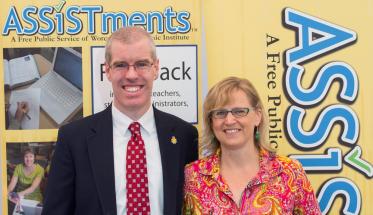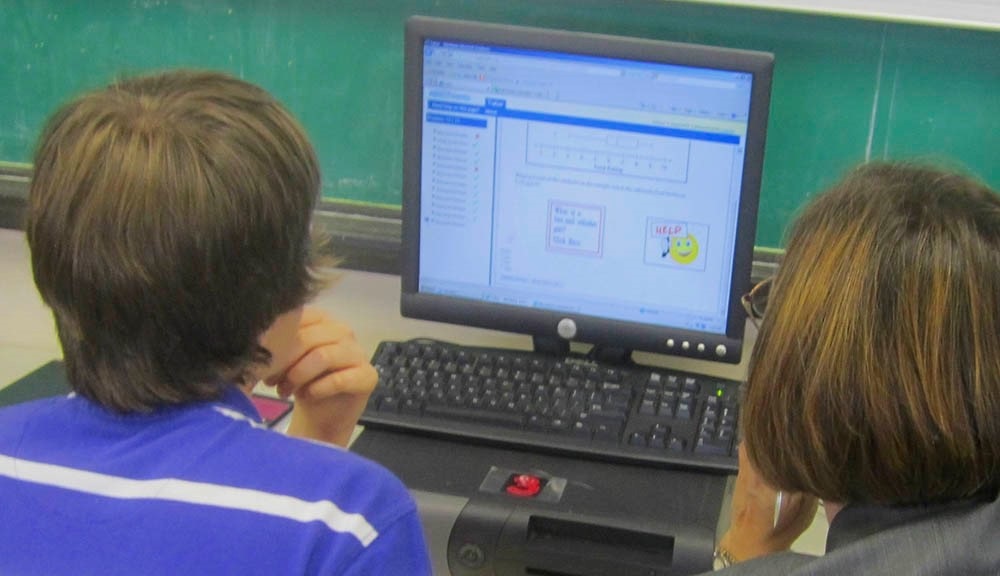Two separate multimillion dollar grants have been awarded to education researchers studying the impact of ASSISTments, a free web-based learning platform developed at Worcester Polytechnic Institute (WPI) that was previously shown to boost student scores on standardized math tests by approximately 75 percent. The grants, from the Institute for Educational Sciences (IES), part of the U.S. Department of Education, total over $7 million. They will build upon the prior trial to provide a “deeper dive” on ASSISTments.
Large and rigorous randomized controlled trials of online education tools for K-12 education are difficult to conduct and analyze, leaving school administrators with limited information to consult when making important decisions regarding education technology for their districts. The ASSISTments trial, conducted from 2012 to 2014 by SRI Education, a division of SRI International, was important in that it provided hard, comparative evidence of the impact of education technology.
Funded by IES, the study included nearly 3,000 students at 43 public schools in Maine, which, since 2002, has provided every seventh-grade student a laptop. Results published last fall in the journal AERA Open by the American Educational Research Association showed that in the schools using ASSISTments, students learned 75 percent more on a standardized mathematics test, compared to what they would be expected to have learned in a typical school year. In addition, SRI reported that students of lower socio-economic means made the greatest gains among their peers, thus showing ASSISTments helped close persistent achievement gaps.

Neil Heffernan works with students and their teacher
at a local school during the development of the
ASSISTments learning platform.
Researchers are now building upon that successful study and expanding it into school districts across the country through the two new IES grants. The first, a four-year, $3.3 million replication project awarded to SRI International, WPI, and North Carolina State University, is intended to analyze mathematics test scores among a more diverse sample of students. It will include nearly 200 teachers and 10,400 seventh-grade students in 66 public middle or junior high schools across North Carolina, which researchers find provides a demographic sampling that is more representative of the entire nation and thus more likely to reliably reflect the impact of the program.
The second grant, a five-year, $3.8 million project, will be conducted by the American Institutes for Research (AIR), one of the world’s largest behavioral and social science research and evaluation organizations. It will evaluate the efficacy of ASSISTments on learning among roughly 15,000 seventh-grade students in seven geographically, culturally, and economically diverse sites across the United States.
“The results of the study in Maine were dramatic and verified what we had been seeing anecdotally,” said ASSISTments lead creator, Neil Heffernan, PhD, professor of computer science and director of Learning Sciences and Technologies at WPI. “As the developer of the program, I was, of course, excited. As a researcher and educator, however, I want more data. These two new IES grants will further examine and, I believe, validate the efficacy of ASSISTments in improving students’ math skills, while also providing significant ‘clinical grade’ data to demonstrate the program’s ability to close the achievement gap across socio-economic groups.”
ASSISTments was developed by Heffernan and colleagues to provide better homework help for students. It gives immediate feedback to students as they work on assignments from their teachers, and gives teachers insight into areas where students struggle, both individually and as a class. Such homework assistance helps students gain skills, and the data produced allows teachers to conduct more targeted homework reviews and better use their class time. The system fits within common school policies for homework and doesn’t require instructional changes, such as new textbooks or altered pacing through topics. Teachers can assign problems, and students will get immediate feedback, while teachers will get reports. For details, watch a brief animated video summarizing ASSISTments. ASSISTments is free to districts and is one of a small number of homework platforms available via Google Classroom.
Both new IES studies are actively recruiting school districts to participate. Schools must already provide technology such as a tablet, Chromebook, or laptop to students to take home for homework. Learn more about efforts to recruit schools to the studies: recruitment.assistments.org.
Resources:
--ASSISTments description video
--“Study shows WPI-developed math homework tool closes the learning gap”
--Recruitment details





